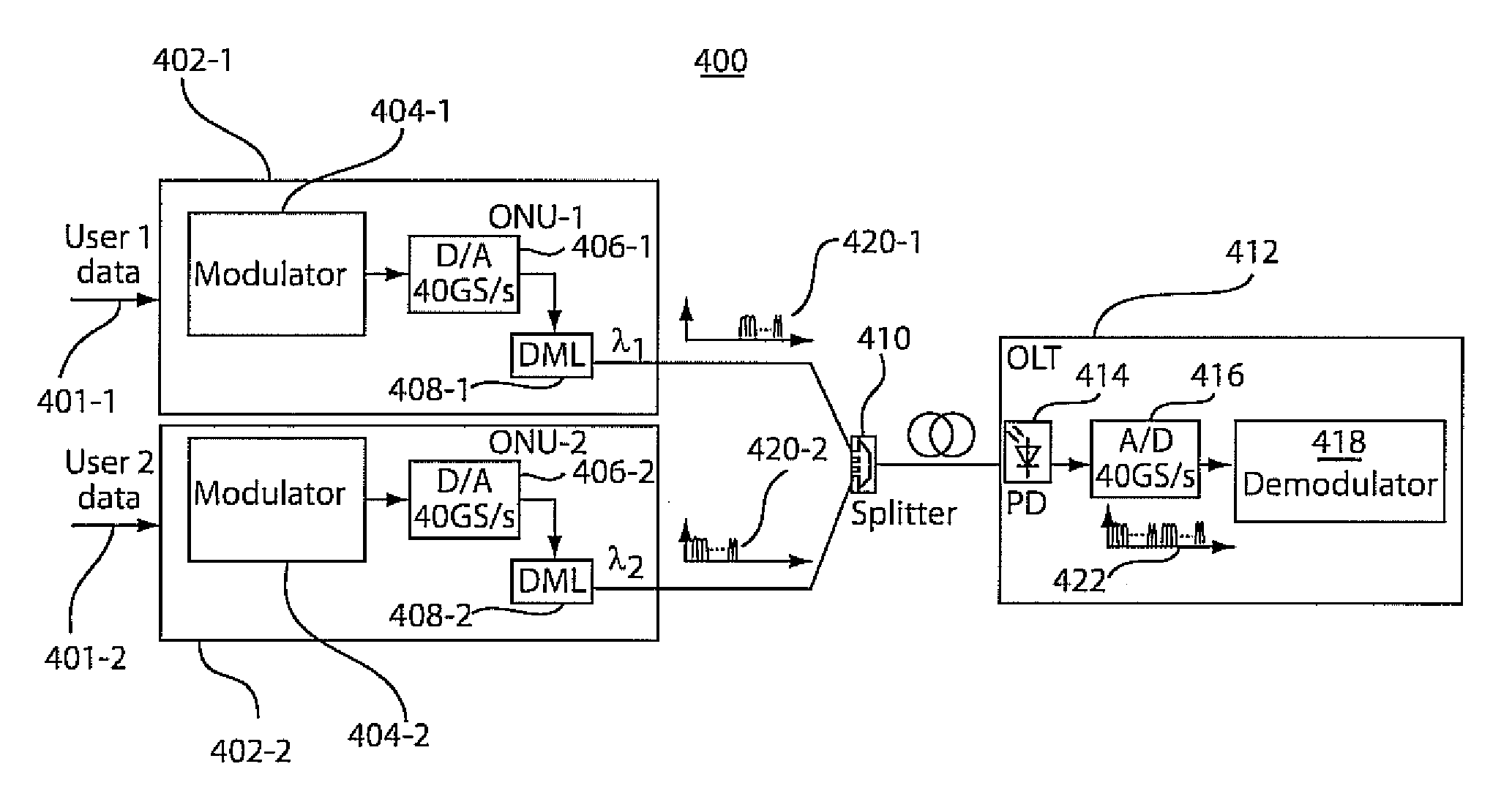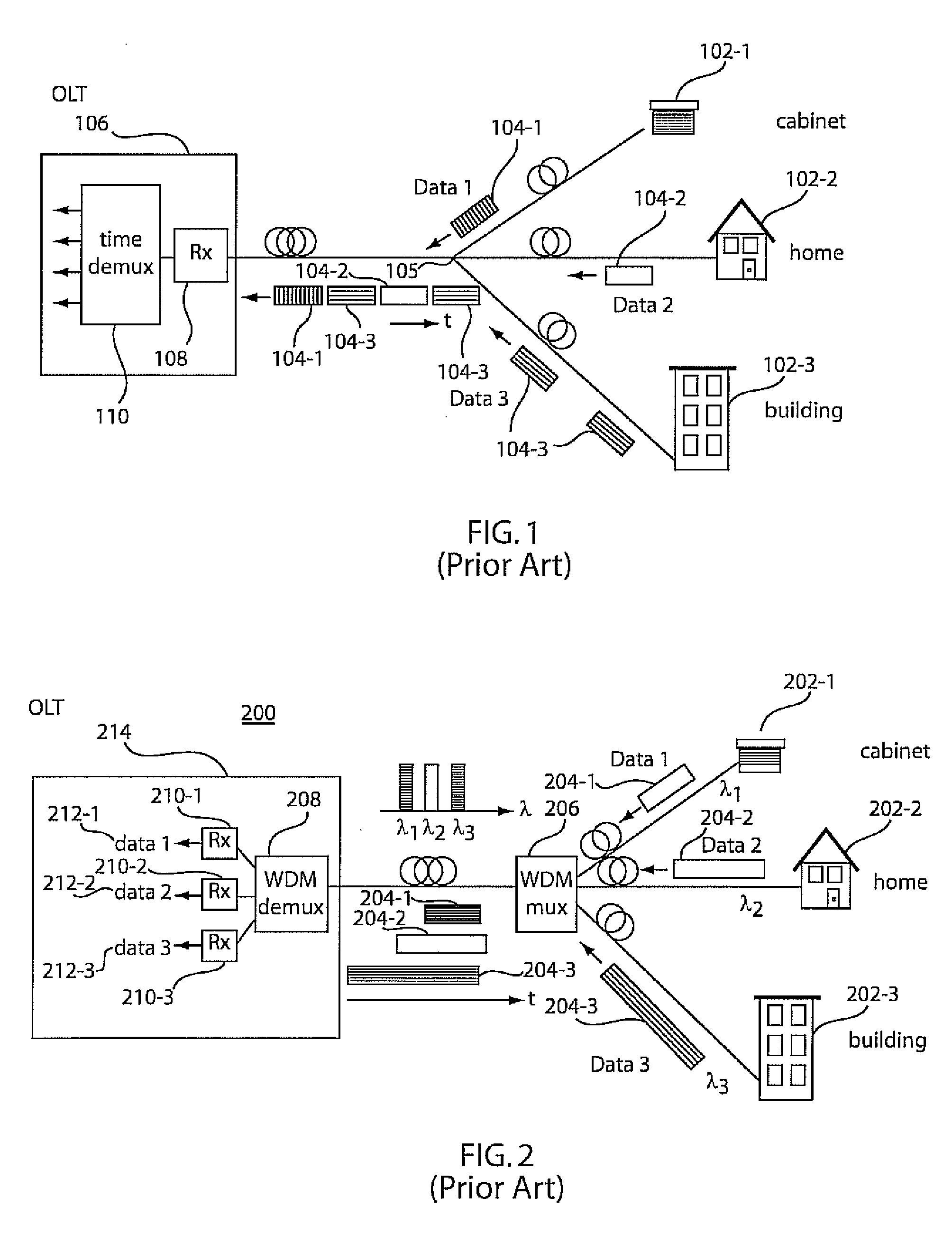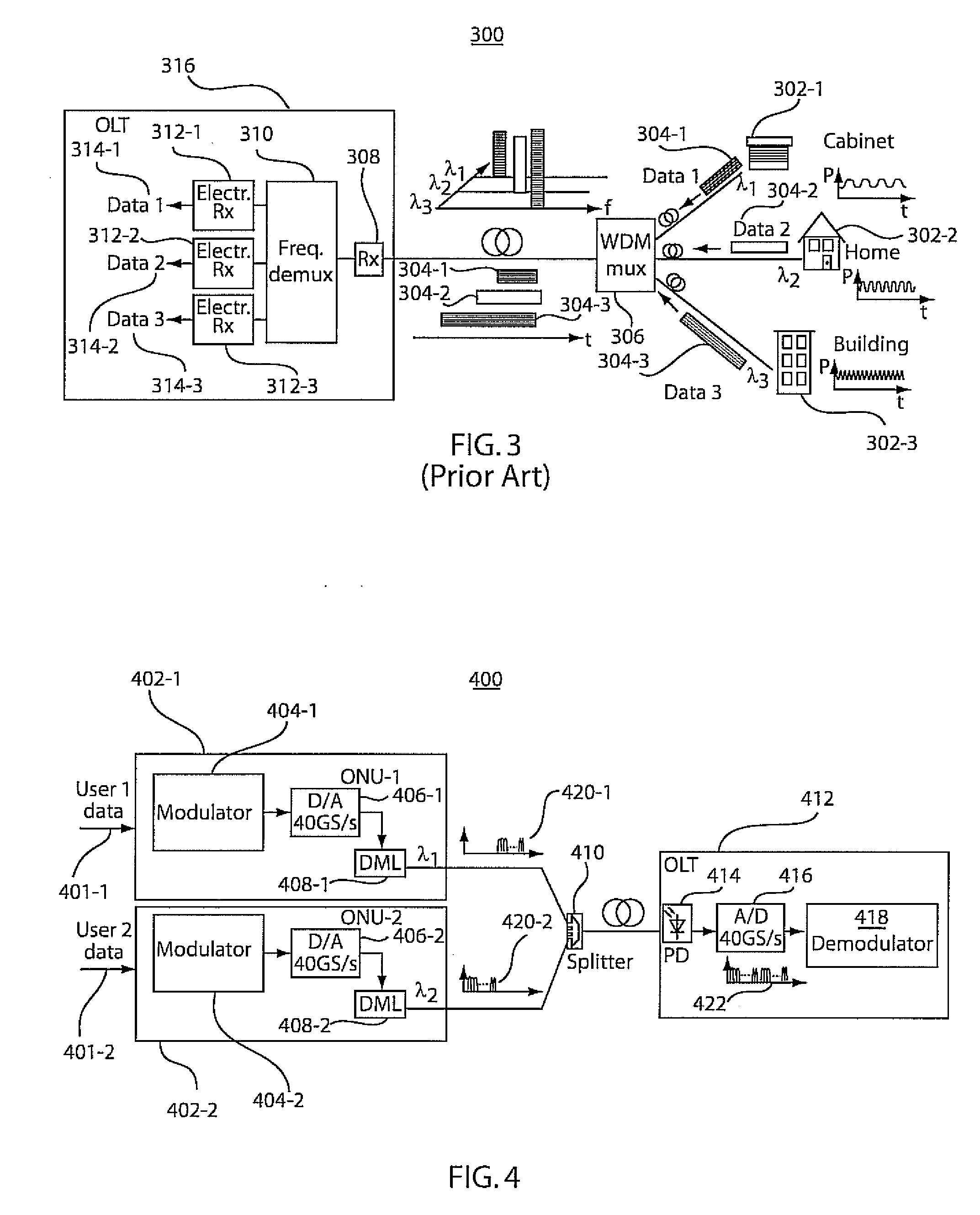Passive optical network system employing sub-carrier multiplexing and orthogonal frequency division multiple access modulation schemes
a technology of multiple access modulation and optical network, applied in the field of passive optical network, can solve the problems of increasing the cost of olt, tdm-pon system suffers from a disadvantage, and limited transmission capacity per onu, and achieves the effect of dynamic bandwidth allocation and reduced sampling ra
- Summary
- Abstract
- Description
- Claims
- Application Information
AI Technical Summary
Benefits of technology
Problems solved by technology
Method used
Image
Examples
Embodiment Construction
[0036]Referring now in detail to the figures in which like numerals represent the same or similar elements and initially to FIG. 4, an exemplary Orthogonal Frequency-Division Multiple Access (OFDM / A) Passive Optical Network (OFDMA-PON) system is illustrated. OFDM / A is a modulation scheme that may be characterized as a hybrid of Orthogonal Frequency-Division Multiplexing (OFDM) and Time Division Multiple Access (TDMA) modulation scheme. OFDM is based upon the principle of frequency-division multiplexing (FDM). A digital bit stream that is to be transmitted is split into several parallel bit streams, typically dozens to thousands, transmitted simultaneously. The available frequency spectrum is divided into several sub-channels, and each low-rate bit stream is transmitted over one sub-channel by modulating a sub-channel using a standard modulation scheme, for example, PSK, QAM, etc. The sub-channel frequencies are chosen so that the modulated data streams are orthogonal to each other, ...
PUM
 Login to View More
Login to View More Abstract
Description
Claims
Application Information
 Login to View More
Login to View More - R&D
- Intellectual Property
- Life Sciences
- Materials
- Tech Scout
- Unparalleled Data Quality
- Higher Quality Content
- 60% Fewer Hallucinations
Browse by: Latest US Patents, China's latest patents, Technical Efficacy Thesaurus, Application Domain, Technology Topic, Popular Technical Reports.
© 2025 PatSnap. All rights reserved.Legal|Privacy policy|Modern Slavery Act Transparency Statement|Sitemap|About US| Contact US: help@patsnap.com



